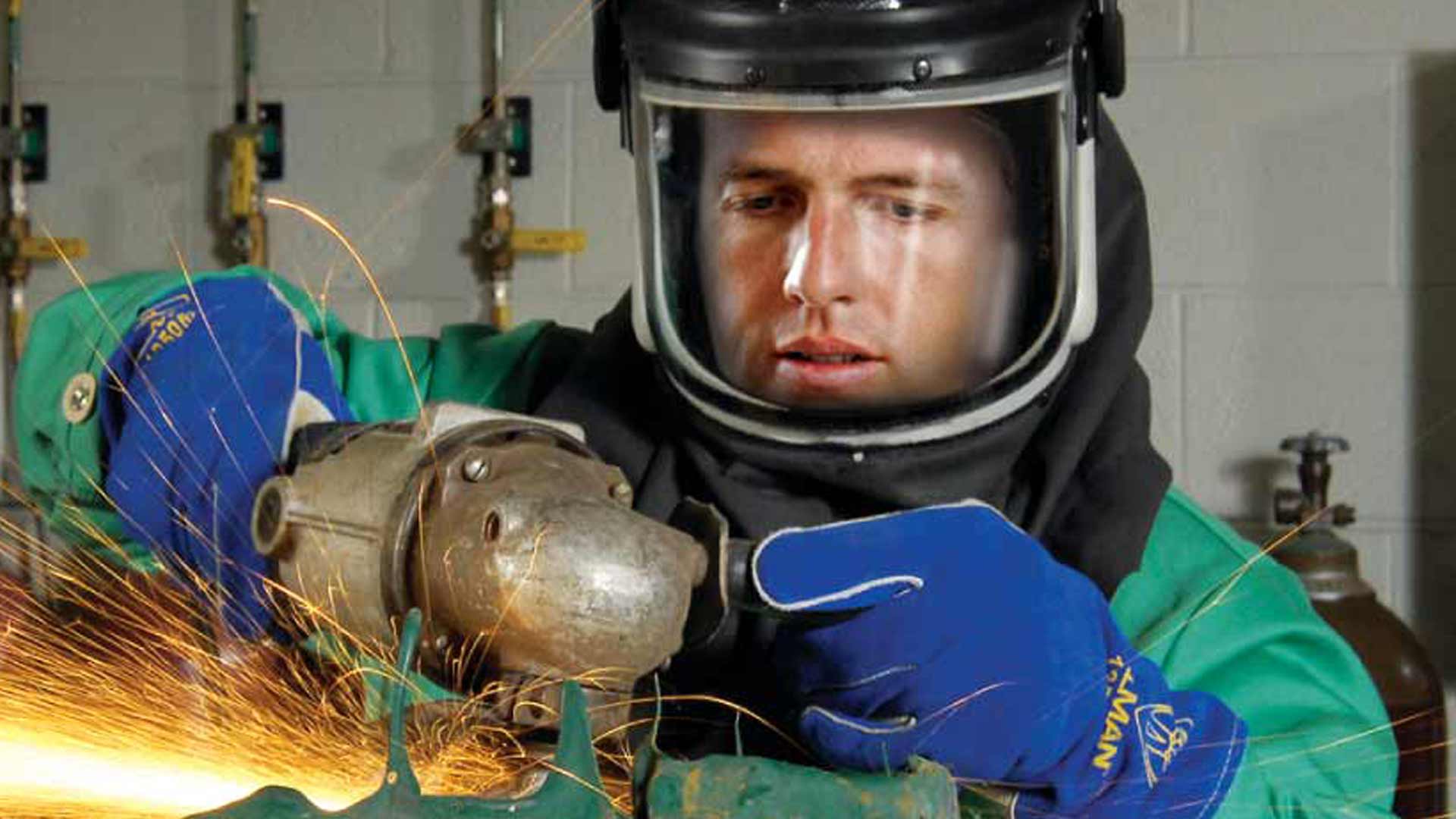Grinding Booths: An Easy Solution to a Gritty Problem

The Challenges
Grinding wheels become as workplace challenge as soon as they’re turned on. This equipment makes a lot of noise. Wheels are also dangerous, which is why OSHA issues safety regulations for this equipment. Workers must be well trained, and equipment must be up to standards.
Once grinding gets underway, the sparks start to fly, among other things. Particulates coming off of a grinding wheel have considerable mass and velocity. Pieces can travel ten or more feet, hitting walls, ceilings or passers-by who have poor self-preservation instincts. The heaviest of these particulates end up on the floor, sometimes in volume. The finer particulates linger in the air as inhalable dust.
Dust in a grinding station is a potentially hazardous substance. Depending on the object being worked on, the dust might include paints, metals or unknown coatings. If the grinding is prolonged, the substrate—often metal—will be turned into dust. If a worker is grinding a rough weld to prep it for finishing, the filler metal used in the weld—frequently a toxic substance—will be turned into dust. When these substances are turned into dust, workers are put at risk. Many metals are extremely dangerous as respirable dust.
OSHA maintains regulations for workers’ exposure to these dangerous dusts. Among OSHA’s hundreds of standards for specific respirable substances are many of those found in grinding operations, including lead, nickel, manganese and so on. OSHA also has general regulations for dust found in a facility’s air. It is vitally important for an employer to comply with these regulations. Failure to comply can result in serious fines and perhaps other legal or reputational harm.
The Solution
The answer to these gritty challenges is a grinding booth. The best grinding booth has three or four sides and a dust collector of some kind. Walls of the booth often include sound attenuation and fire resistance. Putting up a grinding booth will make an immediate difference. Not only will noise be radically reduced, but innocent passers-by will no longer be peppered with particulates.
A dust collector with powerful airflow is the perfect companion for a grinding booth. Lingering dust is both a health hazard and a visual and olfactory nuisance. A collector mounted to the back of the booth or via a fume arm can evacuate these dusts before they cause a problem. The key to an effective grinding booth is having sufficient airflow—it should have enough velocity to capture as many particles as possible.
RoboVent has nearly three decades controlling dusts and fumes in manufacturing environments. Our engineers understand grinding, sanding, cutting, welding and every process that creates the dusts and fumes that create air quality problems for manufacturing facilities.
RoboVent offers a number of dust collectors to work in grinding booths. For example, a collector in the Fusion Series generates powerful airflow while remaining efficient and easy to operate. Our Endurex filters keep the air cleaner and, due to their vertical orientation, have longer life spans than most other filters on the market; this means savings of both money and maintenance time. Optional Delta3™ Spark Arrestor makes sure sparks are extinguished before they can produce a fire. Our custom booths are designed and assembled with modular components, making them easy to use in a facility and less expensive to design and implement. Their modular nature means you can move them whenever you need.
Grinding booths are the answer to your noisy, dusty grinding problems. They’re sure to improve the health and safety of your workers and your entire facility.
Contact Us With Your Questions!
SUBSCRIBE TO
BLOG UPDATES








